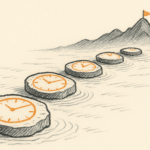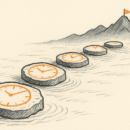Here’s a better to way to handle customer service: try Twitter
“Frustrated by the 40 minutes she spent on hold with Citibank customer service, Stacy Small tweeted her displeasure. To her surprise, a Citibank agent tweeted right back. “Send us your phone number and we’ll call you right now,” read the message.
Within minutes Ms. Small, who owns a luxury-travel company in Los Angeles, was on the phone with an agent, one of about 30 customer-service personnel based in Jacksonville, Fla., and San Antonio who have received special training in social media. The agent took such good care of her that, now, whenever Ms. Small has a problem she bypasses the call center and instead tweets her concerns to the Twitter address @askCiti.
“I never thought I would have a good relationship with a customer-service agent, but they take all the stress away from dealing with a big bank,” Ms. Small said.”
SUZANNE KAPNER, www.online.wsj.com (4 October, 2012)
Banks, let us admit, have a terrible reputation for customer service. In the US, studies suggest nearly one in five customers have severe service issues with their bank. In Kenya, that statistic might seem quite desirable to some of our more challenged banks…”Only one in five, you say? Let’s aim for that…”
Jokes aside, a serious solution is right under the banks’ noses. It is called Twitter. As the excerpt from a recent WSJ piece shows, Citibank is leading the way in the US in using the popular social media site as a customer-service tool. It has a dedicated team of highly trained Twitter account-handlers, who know exactly what to do when a customer tweets a complaint or query.
Here, we are a little more reticent in grabbing the opportunity. Banks like KCB have made an early start in taking customer service online and social, but most others are playing a conservative ‘wait and see’ game. Some of our top banks don’t have a local Twitter handle at all. This is short-sighted.
What’s the prize? It’s simple: why wouldn’t you want a channel is that is dramatically cheaper to use than any physical branch or call centre? Why wouldn’t you want a channel that yields rich, real-time, direct data about customer preferences and pet peeves? And why wouldn’t you want to be where your customers increasingly are?
Of course, there are dangers. If you come into social media without a clear strategy, policies and rules, the scope for making a mess is huge. You will, after all, be handing the power to handle customers to a small group of people who will be expected to display instant, dispassionate judgement all of the time.
Studying the early adopters can reveal some early lessons, nonetheless. Don’t open a Twitter handle unless you’re ready to operate it, properly. It isn’t a brochure, or a one-way marketing pipe. Be prepared to have two-way conversations about difficult issues. And don’t do the silly greenhorn thing of ignoring ninety-nine complaints for every one compliment that you highlight.
Equally, don’t be on Twitter merely to direct people elsewhere. I look on in amazement at the number of corporates who merely refer you to a call centre number, or ask you to write an e-mail – or even a letter! Solve the problem as much as you can on the medium itself – don’t use it as a tedious redirect.
And lastly, being great on Twitter is of no use if you’re not great everywhere. If the company behind the handle is broken, no amount of sugar-coated tweeting can help. Indeed, social media will amplify and air your failings faster than you can imagine. Get it right, however, and you have a better, fresher, faster way of doing the customer service thing, just like Citi did in America.
Oh, and how did I get to know Citi was doing it well? Via Twitter, of course.

Buy Sunny Bindra's new book
The X in CX
here »
Popular Posts
- Where are you rushing to—your funeral?June 29, 2025
- The map will appear—once you start walking.July 6, 2025
- Built the app, forgot the flowJune 22, 2025
- How to spot a real thinkerJune 15, 2025















